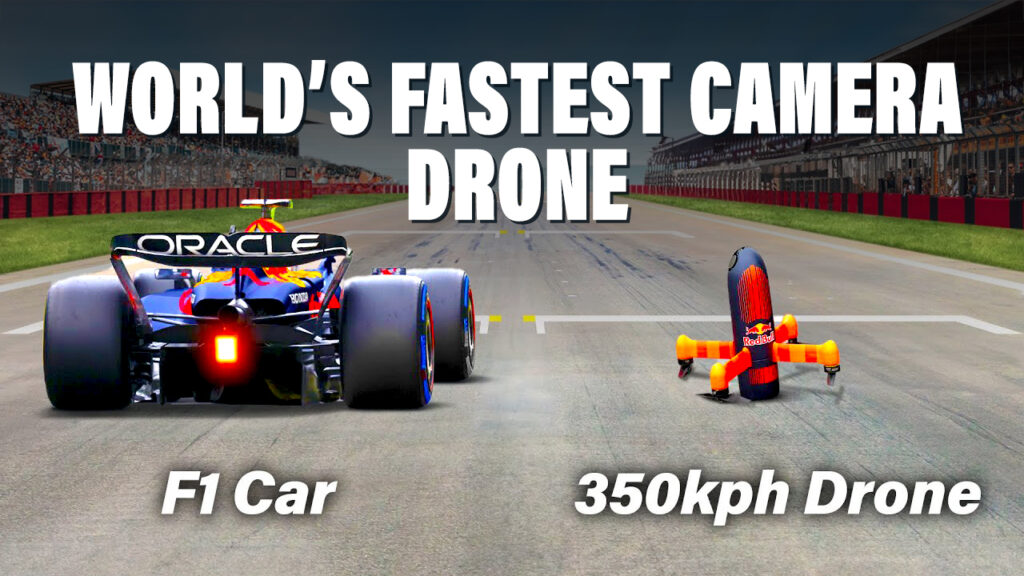In the world of Formula 1, where the competition is as fierce on the track as it is in technological innovation, Red Bull Racing has once again raised the bar. Their latest marvel? A drone capable of chasing down an F1 car at breathtaking speeds exceeding 217 mph. This isn't just a story about a drone; it's about redefining the limits of sports broadcasting.

The inception of this idea traces back to an ambitious goal: to capture Formula 1's essence in a manner never before seen. The challenge was monumental - designing a drone that could match the speed and agility of Red Bull’s RB20, piloted by none other than the world champion, Max Verstappen, himself.
Enter the Dutch Drone Gods (DDG), who accepted the challenge head-on. The task was to create a drone that not only could reach speeds over 217 mph but also maneuver with the dexterity of an F1 car around Silverstone's challenging track. The outcome? A strikingly designed, rocket-shaped drone that embodies speed and efficiency.
However, speed wasn’t the only hurdle. The ability to capture a full lap of Silverstone with an unbroken shot required the drone to slow down and accelerate with the competency of a true racing vehicle. This demanded an innovative approach to its design, pushing the boundaries of what was thought possible for a propeller-driven machine. After rigorous testing and development, the result was a drone with a mere three minutes of flight time - a testament to the extreme conditions under which it operates.
The Master Behind the Machine
The person chosen for the daunting task of piloting this exceptional drone was Ralph Hogenbirk, affectionately known in the drone community as Shaggy FPV. Equipped with a low-resolution headset for live-feed viewing and a foot pedal for camera adjustment, Hogenbirk had to navigate the drone at high speeds, all while avoiding physical obstacles and the turbulent wake of the F1 car.
This mission was no small feat. According to Hogenbirk, it was the “craziest shoot” he's ever undertaken, challenging both his piloting skills and his ability to capture interesting shots under pressure.
The Impact on F1 Broadcasting
The introduction of this high-speed drone into the realm of F1 broadcasting heralds a new era in how we experience racing. The drone’s ability to closely follow Verstappen’s RB20 through Silverstone, especially in wet conditions, has provided an unparalleled perspective on the speed and agility of F1 cars - a perspective that static ground shots simply cannot replicate.
The excitement isn’t limited to the racing community alone. Former F1 driver David Coulthard expressed his admiration for the new vantage points the drone offers, emphasizing how it immerses viewers in the racing experience. He predicts that this innovative approach to broadcasting will soon become a staple of F1 coverage, transforming our viewing experience.
In conclusion, Red Bull Racing’s partnership with DDG has not only set a new speed record for camera drones but also revolutionized the way we watch and understand Formula 1. As the drone zips through the air, mirroring the movements of the world’s fastest racing cars, it promises a future where the thrill of the race is conveyed in ways we've only just begun to imagine.
